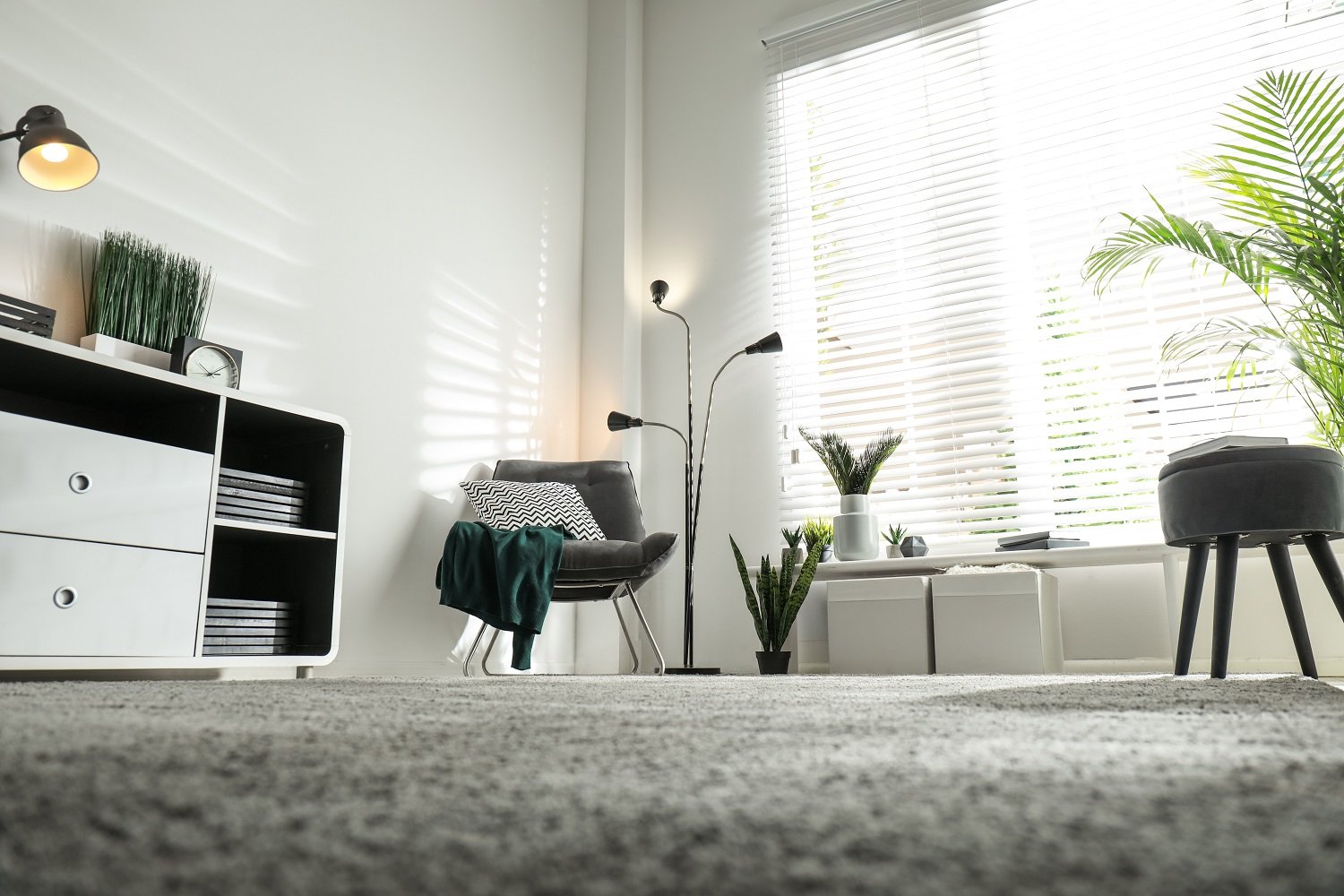Best Carpet for Dining Rooms: 6 Standout Picks That’ll Have You Feasting in Bliss
Eat, drink, and be merry without worrying about those fibers


When it comes to dining room decor, your flooring choice is often overshadowed by considerations of table styles, tabletop settings, and mood lighting. The truth is, selecting the best carpet for dining room spaces can significantly impact both aesthetics and functionality. Whether you prioritize luxury, affordability, or practicality, there's a carpeting solution for your home that’s perfectly suited to your dining needs.
1. Wool

Wool carpeting has a lot of natural resilience and durability. For example, its stain-resistant properties make it an excellent choice for dining rooms in homes that are prone to food messes. Moreover, wool's tight weave minimizes snagging on furniture legs, ensuring long-lasting elegance.
On the other hand, this type of carpet comes with a higher price tag and requires regular deep cleaning due to its rate of absorbency, no matter if you choose a rug or wall-to-wall wool. Consistent cleaning and maintenance will prevent mold and mildew growth.
| Pros | Cons |
|---|---|
| Luxury feel | High absorbency |
| Resists stains | Consistent maintenance needed |
| Resists snagging | Higher cost |
Best for: People who want a durable carpet and aren’t afraid of a little maintenance
2. Cotton
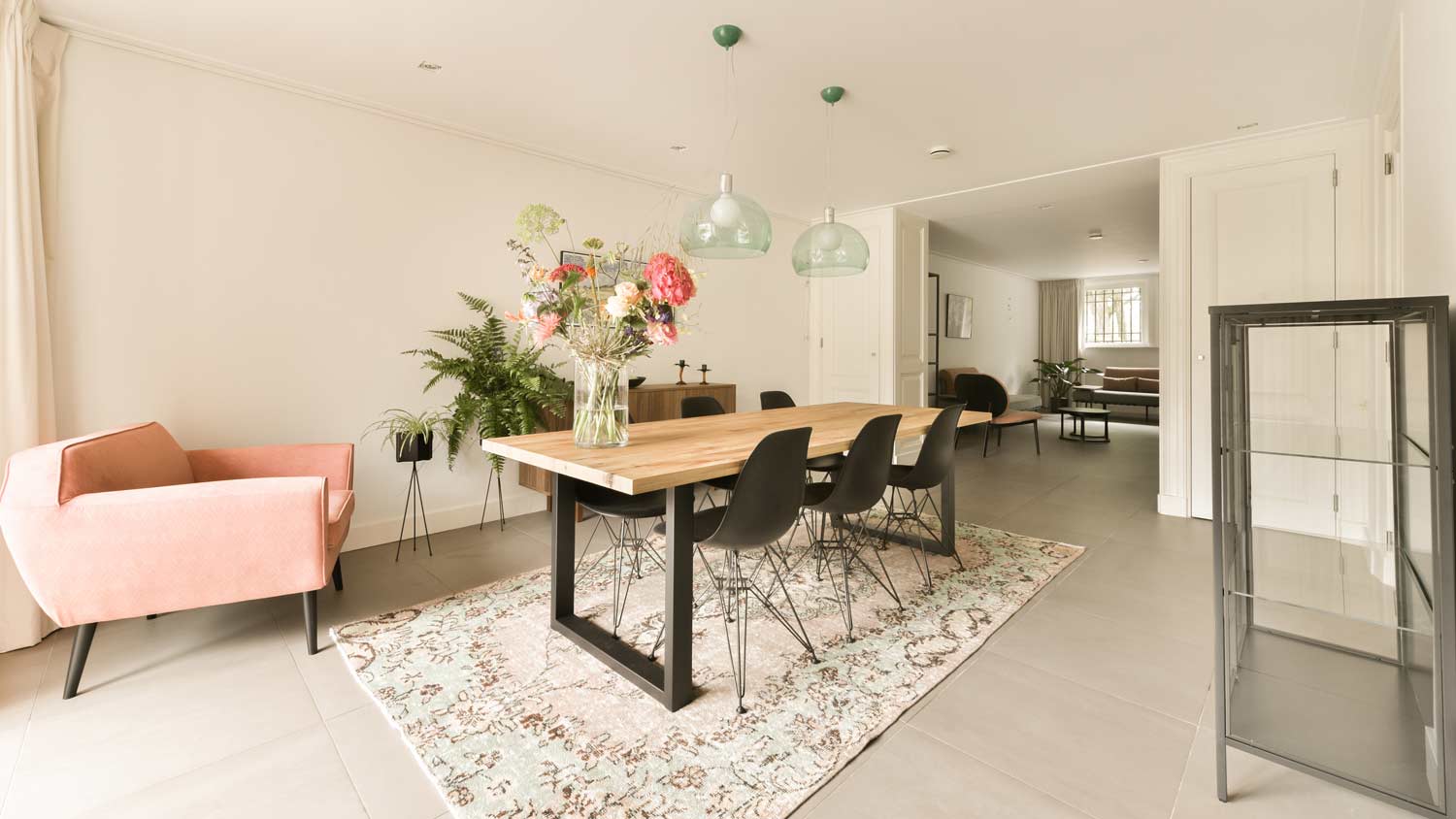
Cotton rugs offer a budget-friendly option without compromising on style. This material is ideal for busy dining areas because it’s easy to clean and often machine-washable. Cotton also holds dyes well, even after repeated washing, so intricate patterns and rich colors will remain bright for longer.
However, the high absorbency of cotton and its susceptibility to stains mean that you may need to clean it more frequently than other materials.
| Pros | Cons |
|---|---|
| Affordable | High absorbency |
| Easy to clean | Prone to stains |
| Retains color | Less durable |
| Natural fiber |
Best for: Those seeking a budget-friendly rug solution
3. Nylon
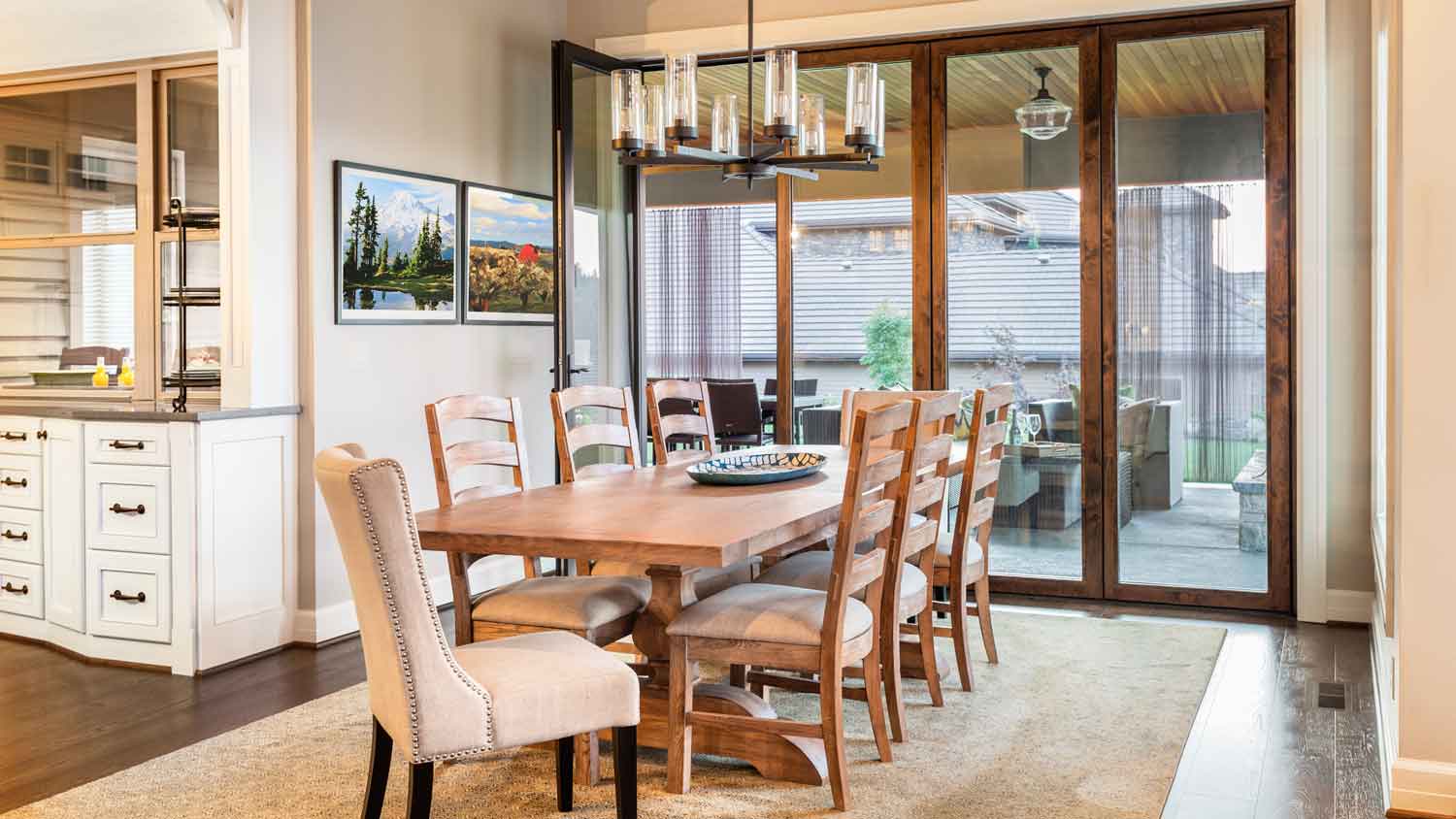
Combining durability with stain resistance, nylon is a top carpet choice for high-traffic dining rooms. Nylon carpets are also hypoallergenic, which is perfect for any household members or guests with sensitivities to allergens. Additionally, mold and mildew won’t thrive in nylon rugs since they’re often treated to repel moisture.
Nylon does come with some disadvantages, though, including the fact that this type of synthetic material may emit higher levels of VOCs and generate static electricity. This rug material also tends to be more expensive than other fibers, like cotton.
| Pros | Cons |
|---|---|
| Highly durable | Synthetic fiber |
| Stain-resistant | Higher VOCs |
| Hypoallergenic | Higher cost |
Best for: Homes with small children prone to spills
4. Olefin

Olefin, or polypropylene, is a carpet material that boasts exceptional water and stain resistance at an affordable price. Its short, dense pile makes it easy to clean, although it may lack the plushness of other materials. Olefin carpets and rugs may wear down faster in high-traffic areas, and they aren’t as durable as nylon.
| Pros | Cons |
|---|---|
| Resists moisture | Prone to wear |
| Resists stains | Rougher feel |
| Affordable | Less durable |
| Easy to clean |
Best for: Homes with multiple small children and pets that are susceptible to dining room messes
5. Outdoor Rugs
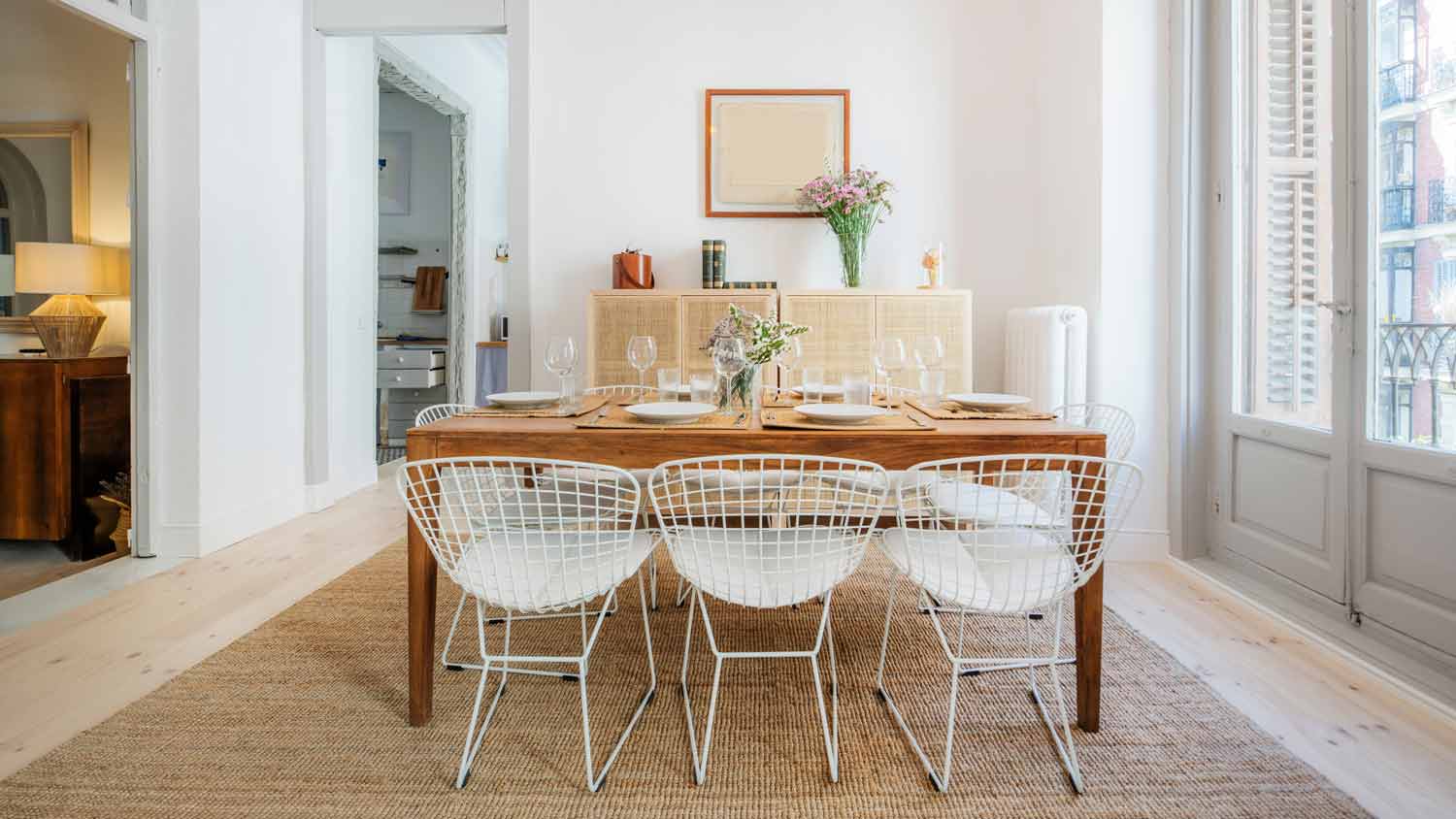
Surprisingly versatile, outdoor rugs offer durability and waterproofing at a fraction of the cost of indoor carpets. While some choices may be less comfortable underfoot, outdoor rugs are easy to clean and are perfect for casual dining spaces. However, you need to be mindful of the slipping hazards that come with outdoor rugs and invest in anti-slip features if necessary.
| Pros | Cons |
|---|---|
| Highly durable | Less comfortable |
| Waterproof | Prone to slipping |
| Low cost |
Best for: Busy families seeking an affordable and casual dining room rug
6. Silk
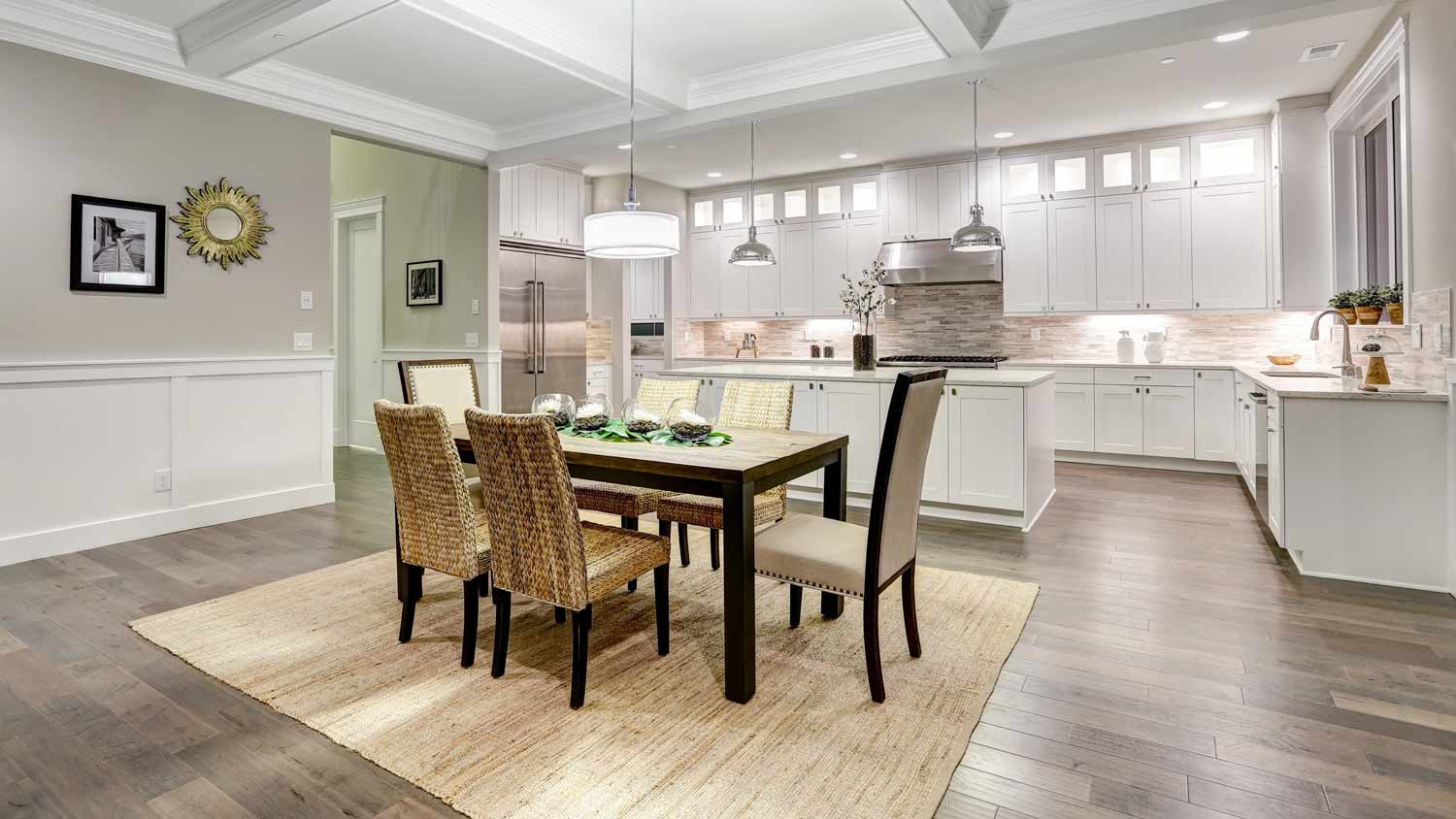
Silk rugs epitomize opulence and sophistication and are perfect for those seeking unparalleled luxury from a natural fiber. With its unique sheen and softness, silk carpet adds an air of elegance to any dining room, and silk tends to have a long life span when maintained properly. Some drawbacks of silk rugs are their high price tag and difficult stain removal, requiring careful maintenance and consideration.
| Pros | Cons |
|---|---|
| Luxurious feel | Tricky stain removal |
| Unique appearance | High price |
| Natural fiber |
Best for: Formal, elegant dining rooms in homes with no kids or pets
Low- vs. High-Pile Carpet for Dining Rooms
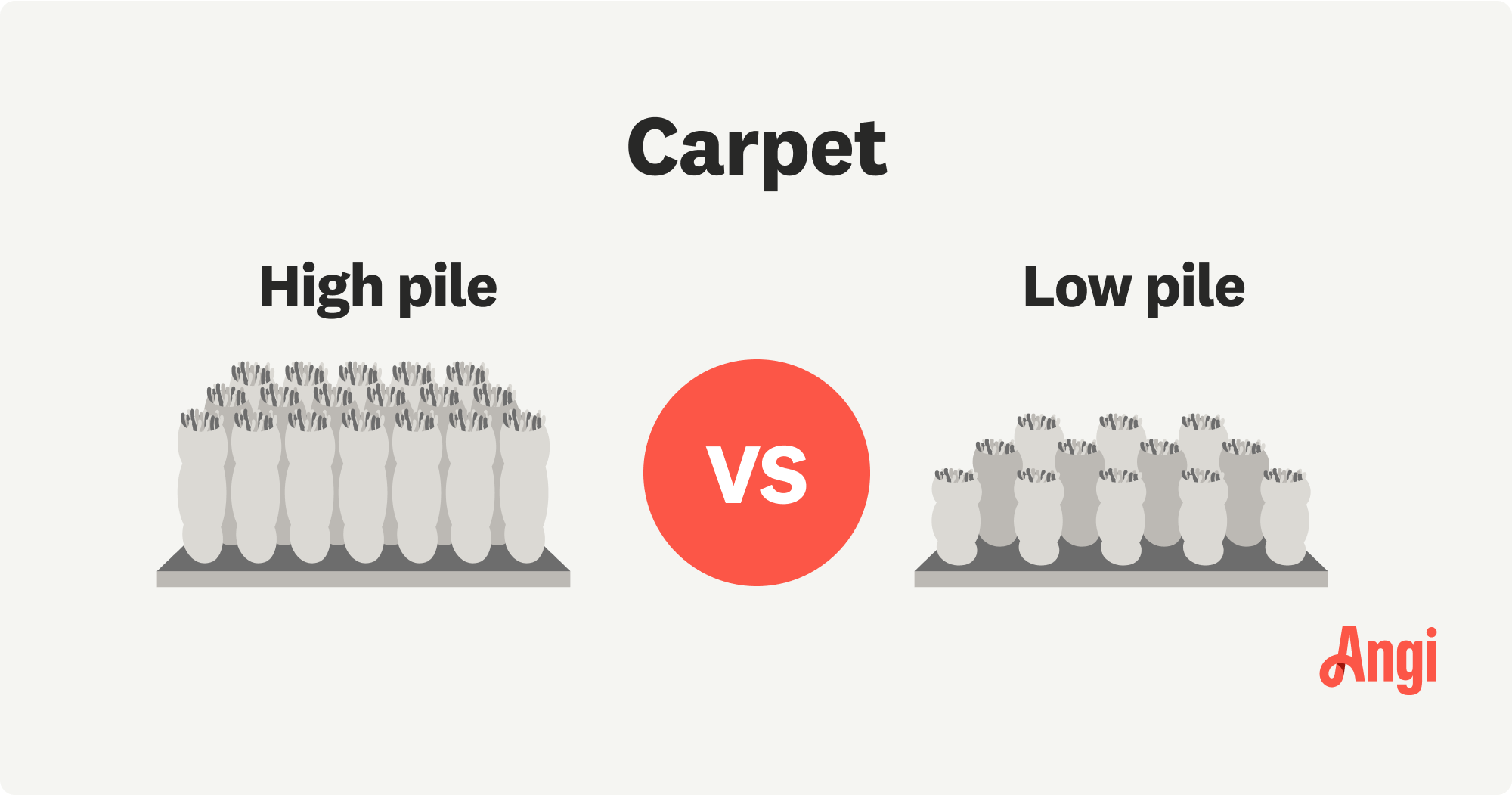
When it comes to the best type of carpet for dining rooms, pile is an important factor. Carpet pile refers to the density and length of the fibers that make up the surface of a carpet, determining its texture, appearance, and feel underfoot. Although high-pile carpets may feel more luxurious, they're not always the best choice for dining rooms. Low-pile carpets or those with flat weaves are better suited to this space, as they're less prone to damage from furniture and easier to clean.
Rug vs. Wall-to-Wall Carpet for Dining Rooms
Many people wonder if it’s best to cover the entire dining space with carpeting or simply put a rug underneath the table. When deciding between a rug or wall-to-wall carpeting for your dining room, consider factors like your room size, your design preferences, and maintenance requirements.
While rugs offer versatility and easy replacement, wall-to-wall carpeting provides a seamless look and greater insulation. Additionally, full-room carpeting is more difficult to put in, so you may need the help of a local flooring company to install wall-to-wall carpet.
Frequently Asked Questions
How often you should clean your dining room carpet depends on how much foot traffic and spillage your home experiences. At the very least, you should vacuum once or twice a week to remove surface debris before it can become embedded in the carpet fibers. Hire a pro for deep cleaning every 12 to 18 months to maintain freshness while prolonging the carpet's life span.
To prevent your dining room carpet from slipping, consider using rug pads or grippers underneath to provide traction and stability. Additionally, ensure the carpet is properly sized and secured to the floor to minimize movement. Regularly check and readjust the rug to maintain its position and safety under your dining room table.
Yes, nylon carpets are suitable for homes with allergies due to their hypoallergenic properties. Nylon fibers are resistant to mold and mildew growth, minimizing allergen accumulation in the carpet. Additionally, nylon carpets are often treated to repel moisture and stains, further reducing the risk of allergens and promoting a healthier indoor environment for allergy sufferers.





- 4 Things to Consider When Choosing the Best Dining Room Rug
- The Ultimate Guide to Choosing the Best Carpet for Kids and Pets
- What’s the Best Carpet for Living Rooms? These 5 Options Are Ready to Impress
- Wool vs. Nylon Carpet: Which Is Best for Your Home?
- The Ultimate Guide to Different Types of Carpet
- What Is the Best Carpet for High-Traffic Areas?
- How to Choose Carpet for Any Room of Your Home
- 7 Types of Flooring That Can Be Laid Over Carpet
- When Is the Best Time to Buy Carpet and Save on Your Installation?
- 21 Dining Room Ideas



